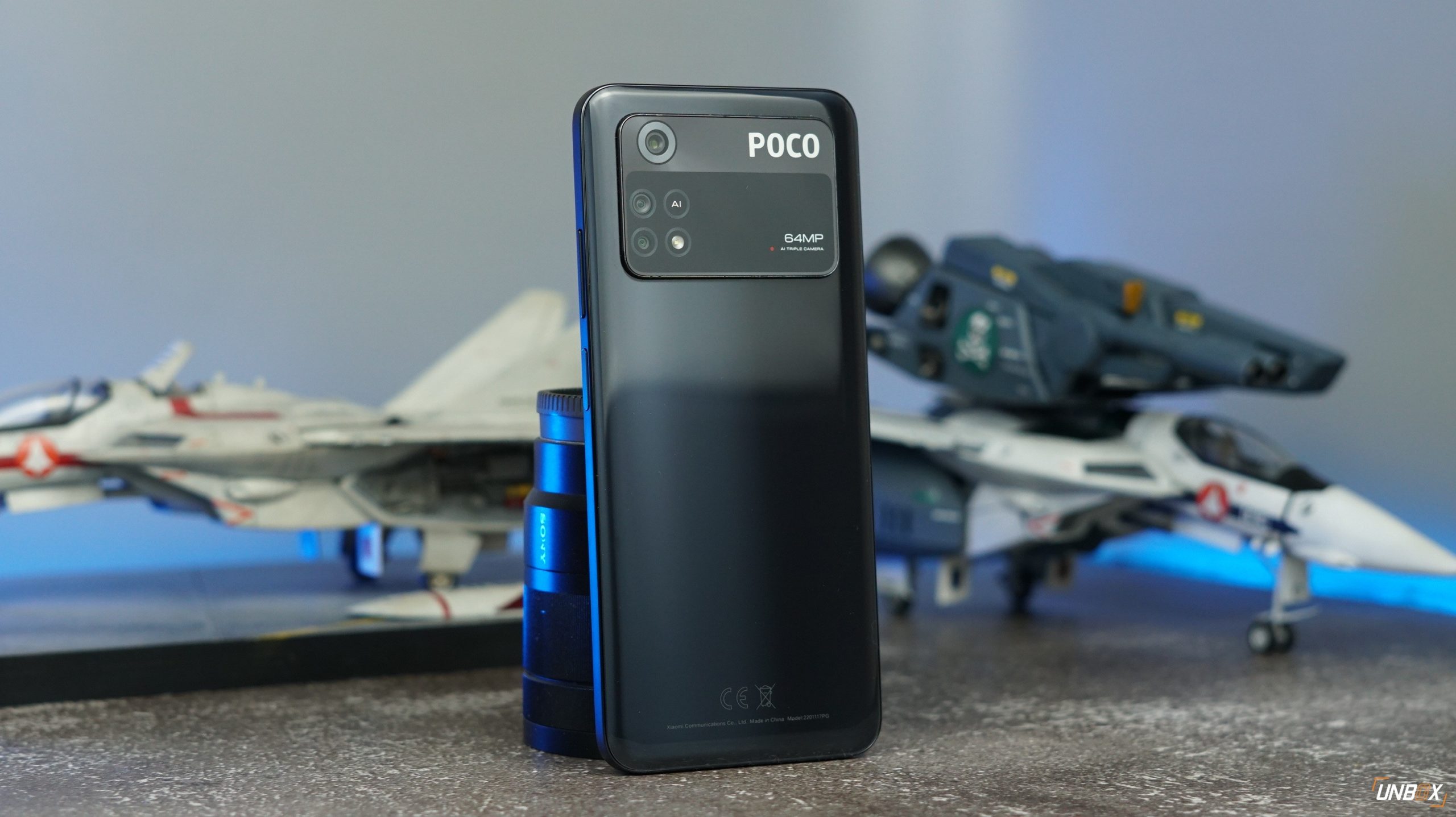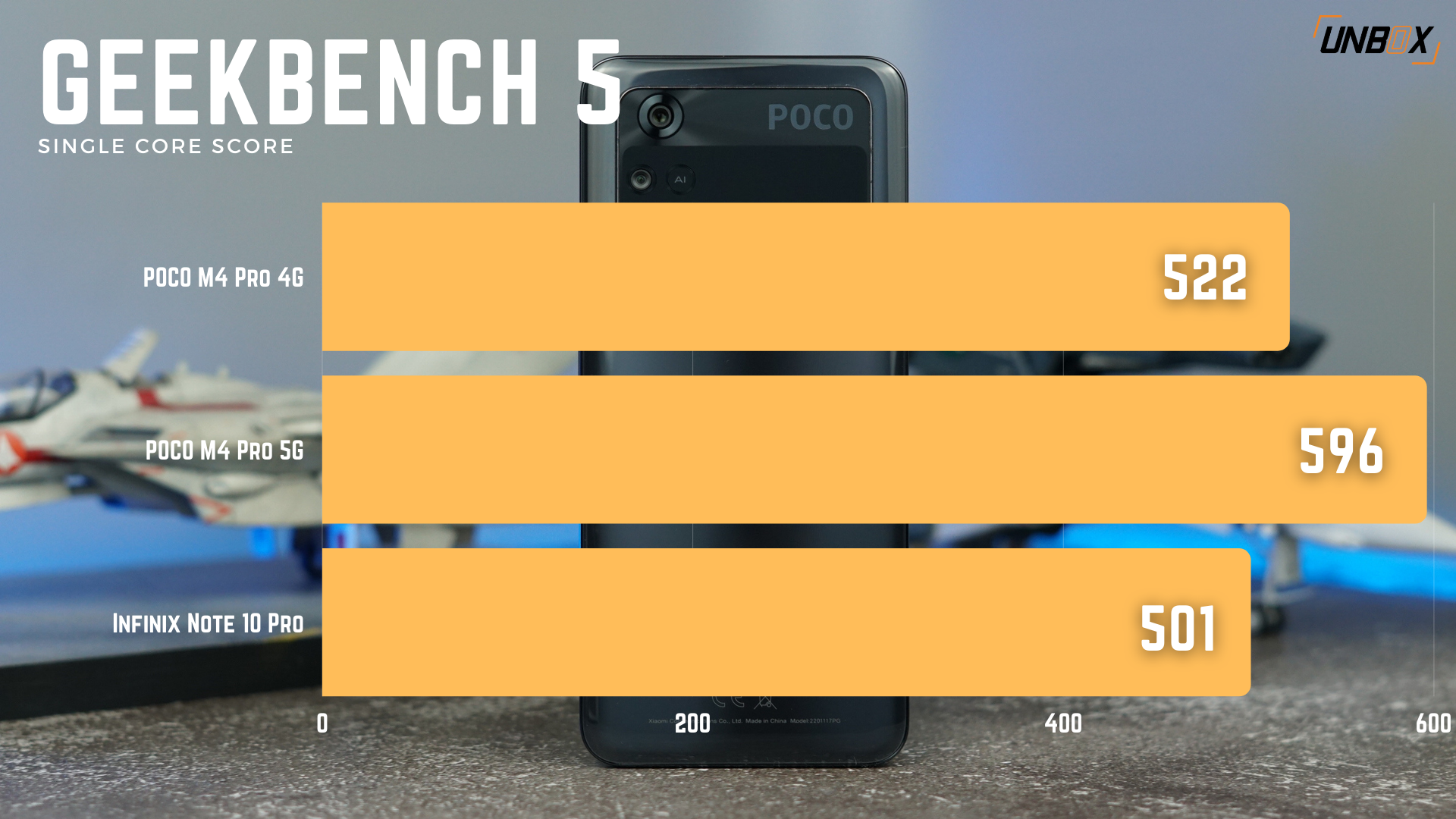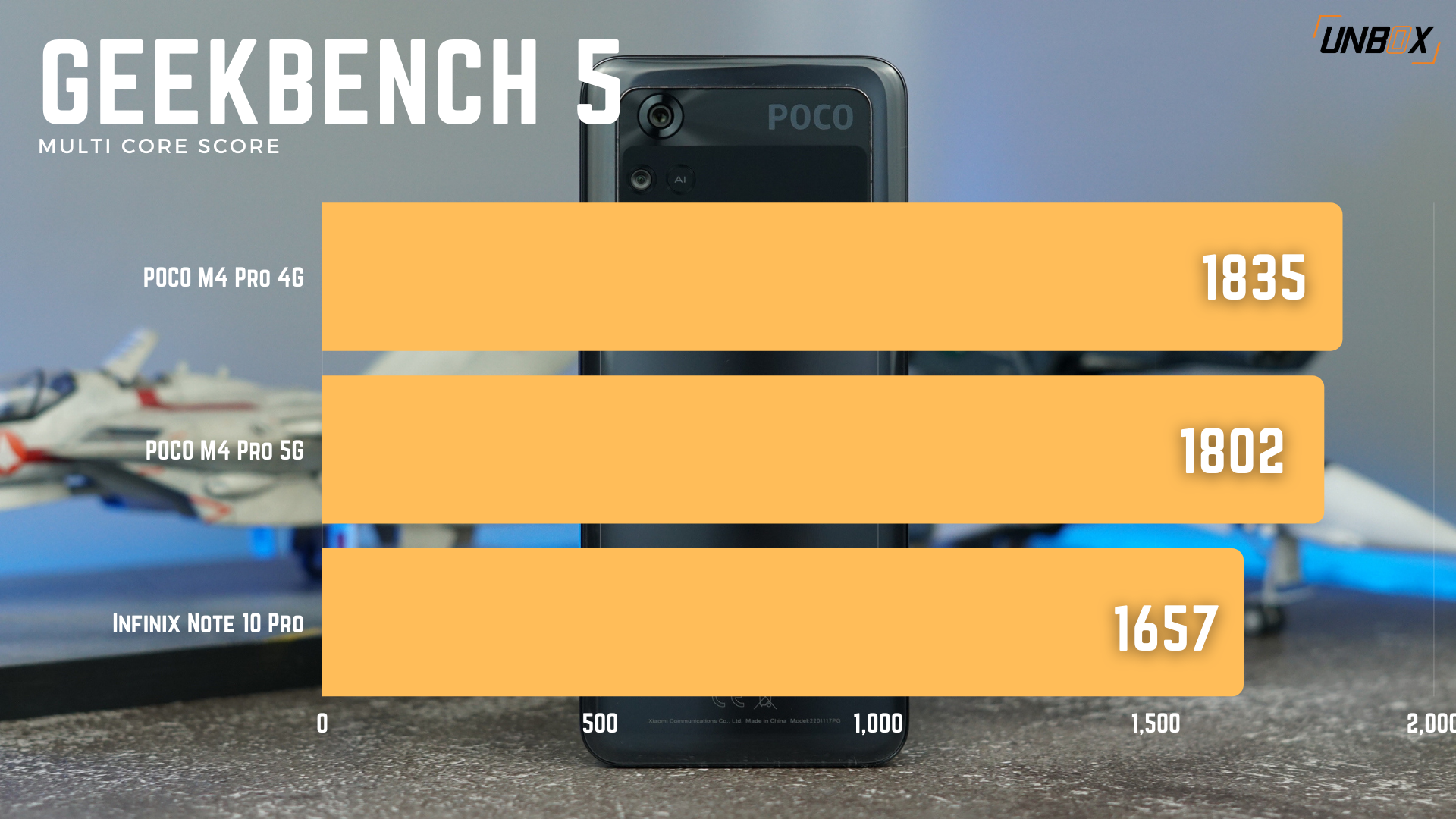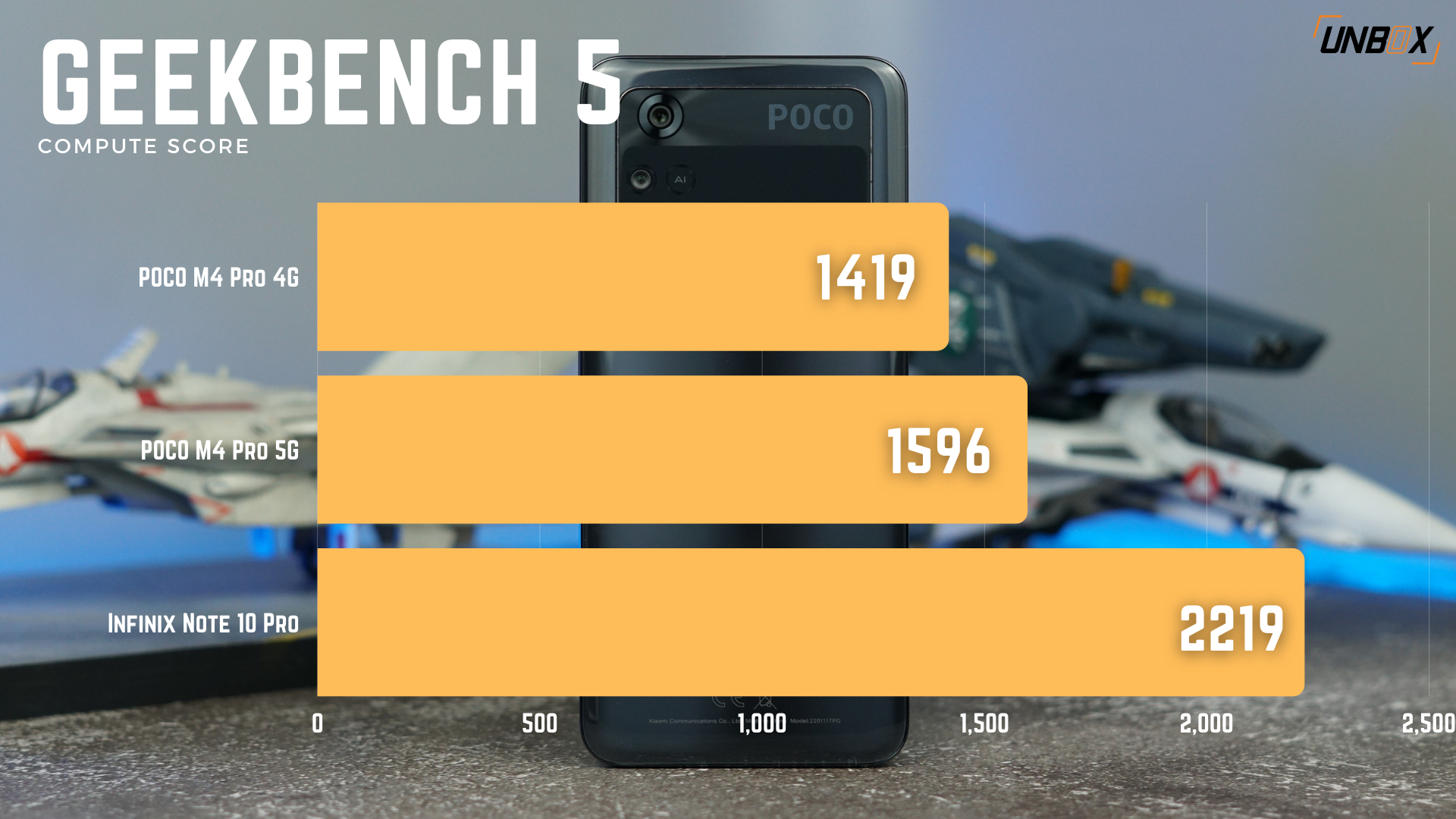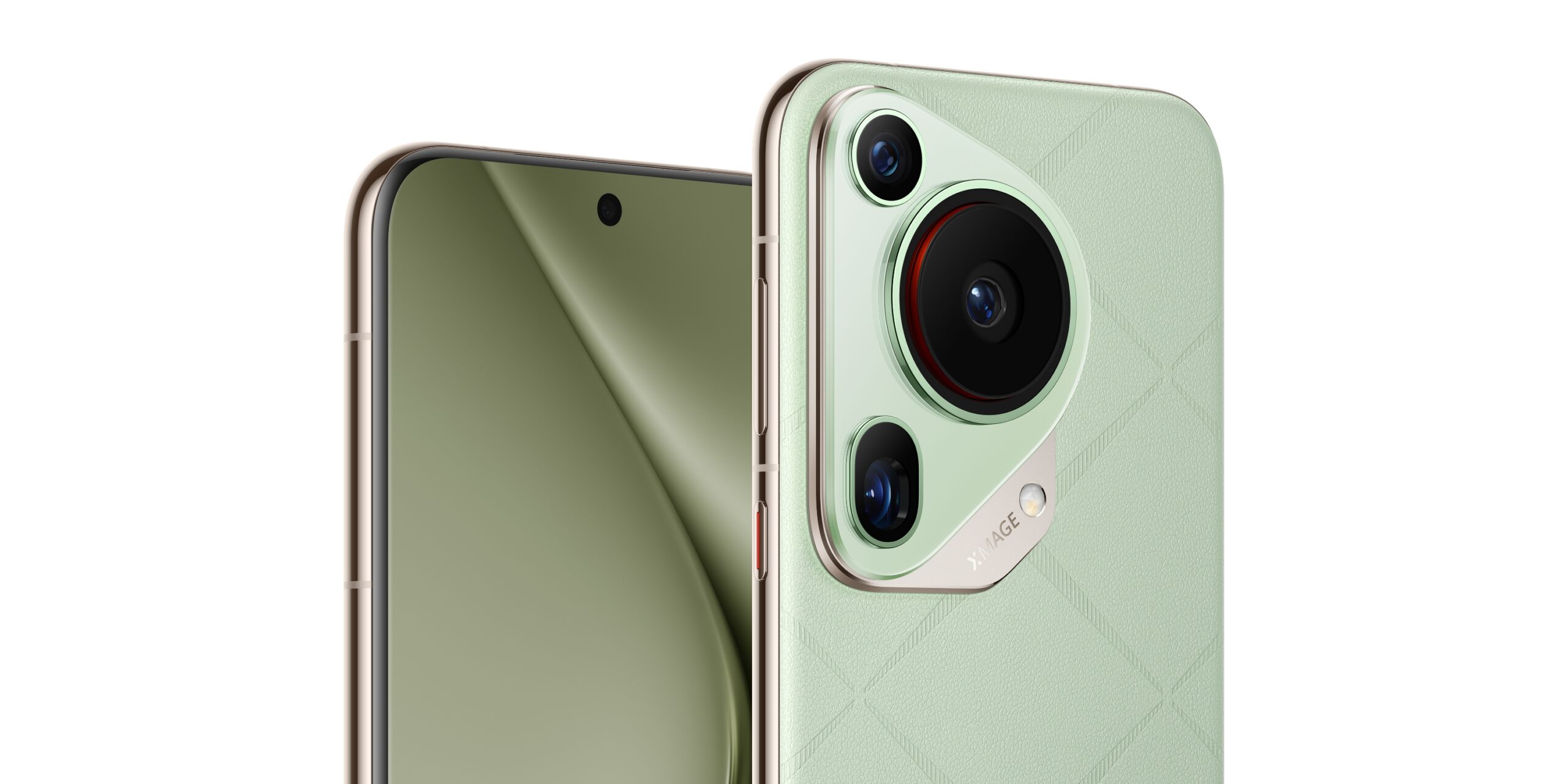Review verdict: The POCO M4 Pro trades 5G for a better AMOLED panel but keeps most of what made the 5G version great in the Philippines.
Pros
- The AMOLED display is so much better than LCD
- Different chipset but you’re getting the same performance as the 5G variant
- Better camera than the 5G model
Cons
- No 5G
- Battery life is a little lower VS 5G model
POCO M4 Pro Review Philippines Specs
- MediaTek Helio G96
- 6GB/8GB RAM
- 128/256GB storage
- 6.4-inch Full HD+ AMOLED display, 90hz refresh rate
- 64-megapixel f/1.8 main camera with PDAF, 8-megapixel f/2.2 ultra-wide-angle camera, 2-megapixel macro camera
- 16-megapixel f/2.25 selfie camera
- 4G
- WiFi, Bluetooth 5.1, side-mounted fingerprint scanner
- Stereo speakers
- 5000mAh battery
- 33w wired charging
- Android 11, MIUI 13 for POCO
The POCO M4 Pro offers surprisingly good value even after the brand removed the biggest selling point of its more expensive brother. Folks willing to live without 5G are in for a pleasant surprise with the POCO M4 Pro, as it still proves to be a capable phone in our full review of it for the Philippine market.
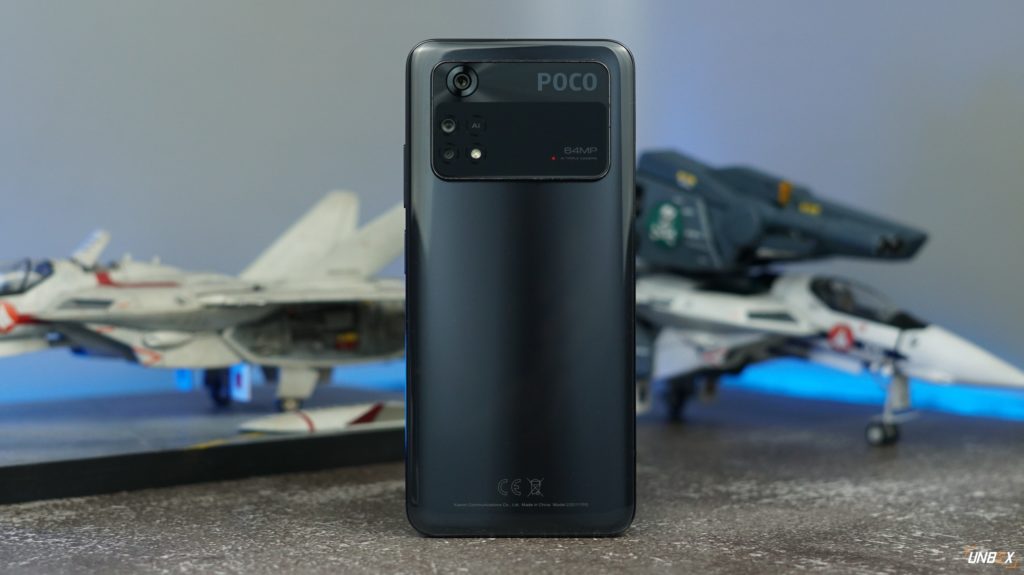
Design
While the POCO M4 Pro has the same name as its bigger brother, it has a far weirder, more polarizing design. Gone is the simple vertical camera module of the 5G model, replaced by a massive extended camera stack that spans the whole width of the phone.
It’s an odd design choice for sure, one that not everyone’s going to like. Personally, it grew on me a little bit but I can see how some people may not like that extra-long camera module on the back.
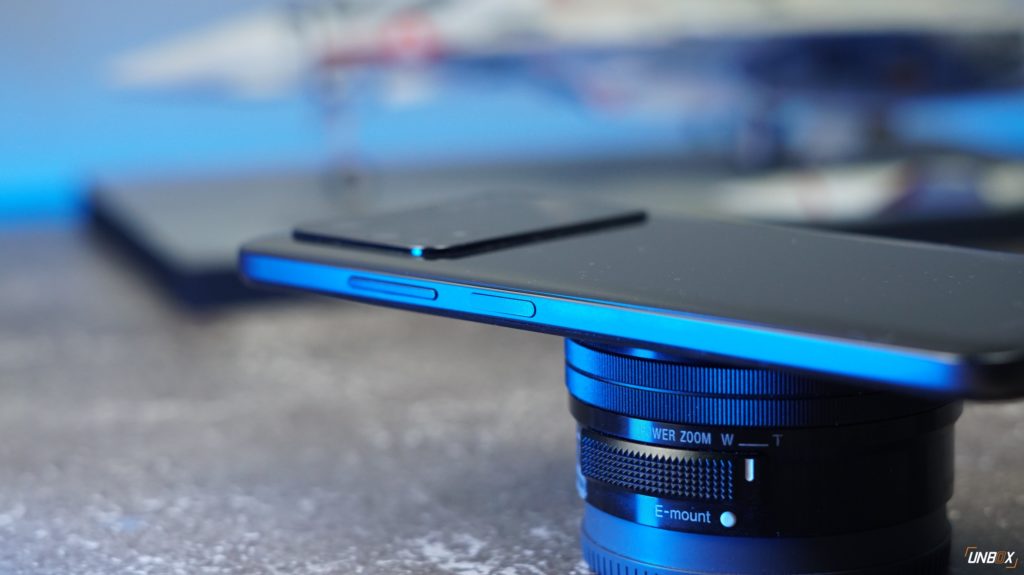
The majority of the phone’s construction is plastic, a cost-saving measure that cuts the price of the device down to what it is. Overall thickness is at 8.1mm, with the phone just being 179.5g in weight, making it slimmer and lighter than the 5G model.
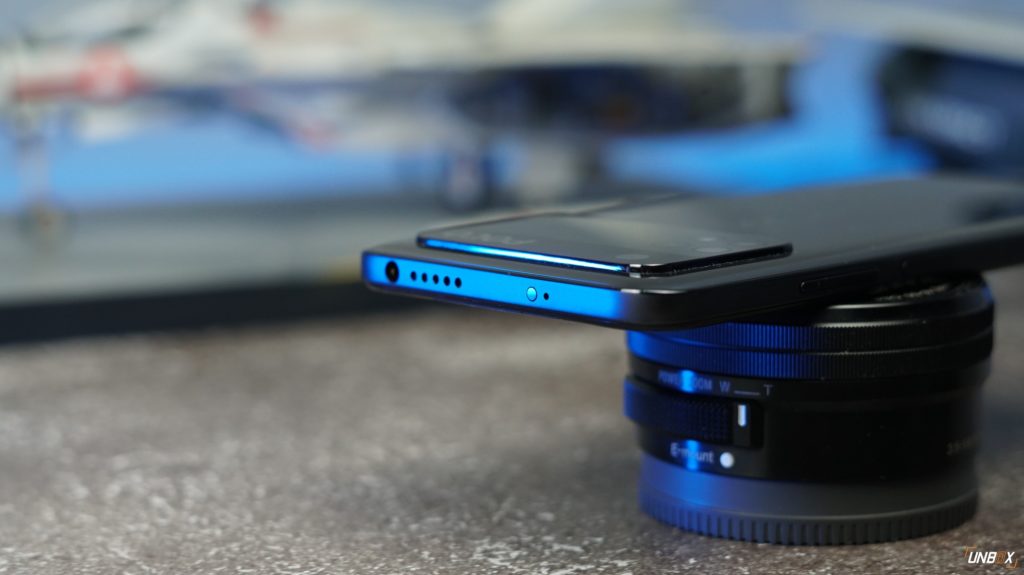
Despite the phone rocking an AMOLED panel, the POCO M4 Pro still uses a side-mounted fingerprint scanner integrated into the power button for biometric unlocks VS an in-display scanner. I don’t mind that cost-saving design decision, to be honest – side-mounted scanners are typically faster than in-display ones in my experience.
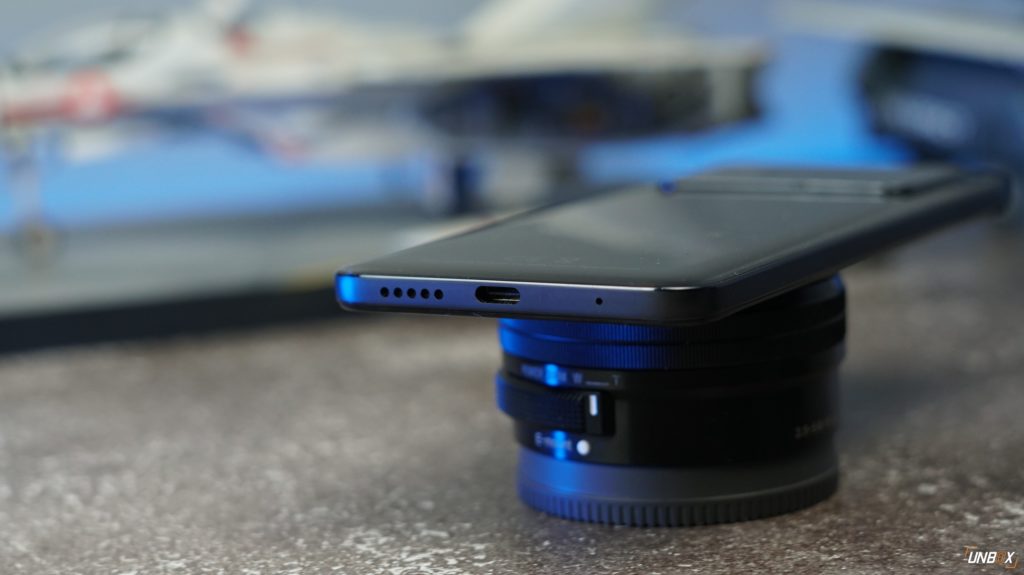
The phone has two speaker grilles – one on top and one at the bottom, along with a 3.5mm jack. Overall the phone feels just as good in the hands as the 5G version, the only main physical difference is that it’s lighter, thinner, and a little bit smaller.
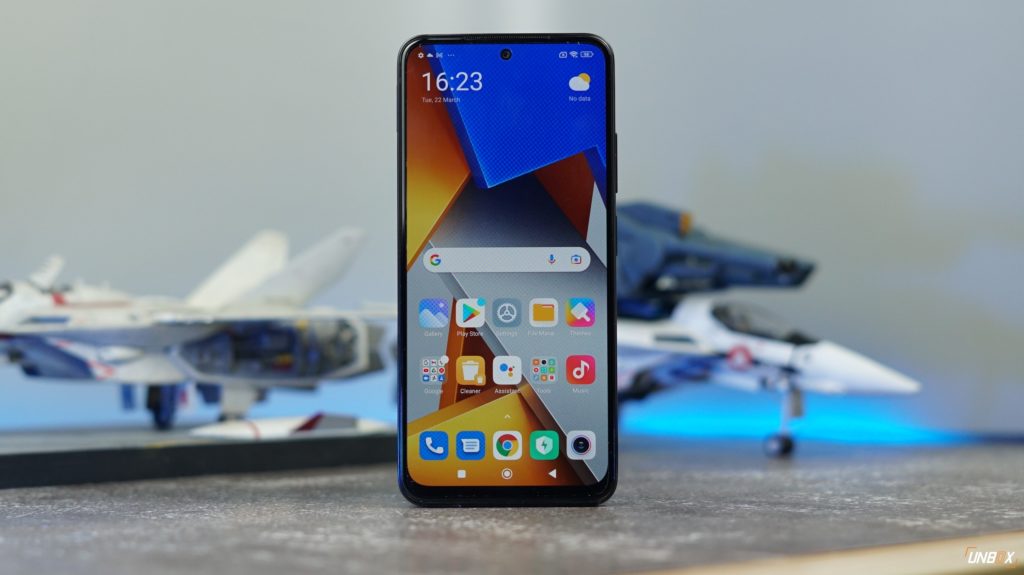
Display
One of the main trade-offs between the POCO M4 Pro VS the 5G version is that you’re now getting an AMOLED panel VS an LCD one. The POCO M4 Pro has a slightly smaller (6.4-inches VS 6.6-inches) display than its 5G brother, but that’s alright since the display tech is now AMOLED instead of LCD.
AMOLED panels just look better than LCD ones and to be honest you’re not really going to miss that extra .2-inches of screen real-estate that disappeared with the phone’s switch to an AMOLED display.
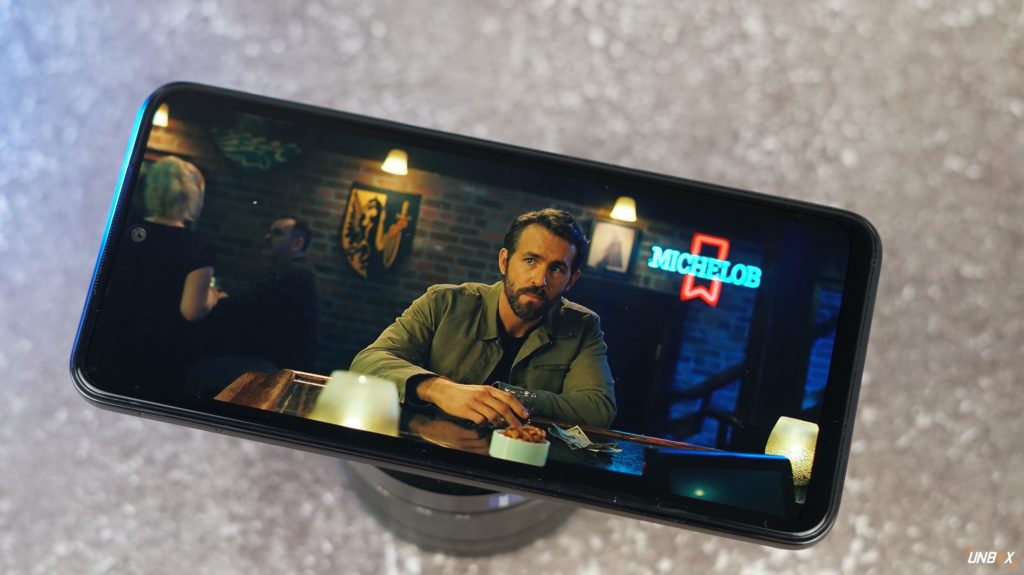
All the same goodies on the 5G model’s display are present on the POCO M4 Pro: 90Hz refresh rate, 2400 x 1800 full HD+ resolution, and Widevine L1.
The main benefit obviously is that you get more vibrant colors with the POCO M4 Pro’s AMOLED display: deeper blacks, better dynamic range – the works. AMOLED panels also generate higher peak brightness numbers, which means you’ll be able to see what’s on the display even under direct sunlight.
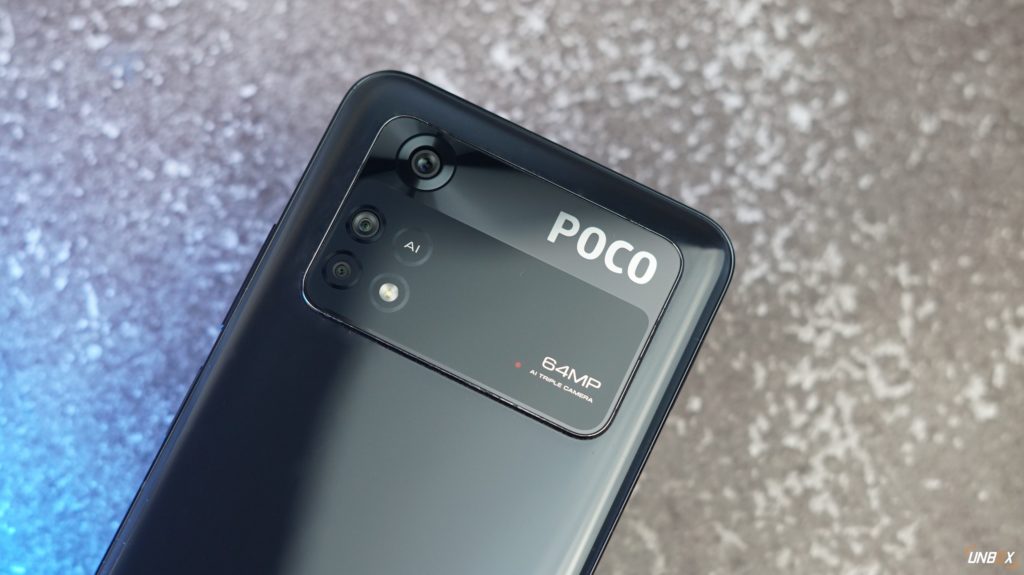
Cameras
Despite the number of camera-looking holes at the back of the ginormous module of the POCO M4 Pro, it only has three cameras on the rear: there’s a 64-megapixel camera (which is an upgrade from the 50-megapixel snapper on the 5G version) with an f/1.8 aperture and PDAF, an 8-megapixel f/2.2 ultra-wide camera and a 2-megapixel f/2.4 macro camera. The selfie cam is a 16-megapixel snapper.
Image quality-wise, the phone does better than the 5G model, with images looking pretty good when taken in conditions that have plenty of lighting. There’s a wee bit of over-processing in some pictures that we took but color reproduction otherwise looks natural.
While the phone isn’t a low-light monster like other devices released recently, it still did reasonably well for a lower mid-range device.
Performance, software, and battery
The POCO M4 Pro uses a MediaTek Helio G96 chipset instead of the MediaTek Dimensity 810 that’s on the 5G variant. Curiously the POCO M4 Pro has a higher performance rating than the 5G variant, at least on the CPU side, though it falls a few points behind its 5G brother when it comes to GPU performance.
But as far as real-world use goes, both phones perform almost the same – they feel really smooth when using apps and navigating through the phone. They’re both capable of gaming too–just don’t expect you’ll be able to crank up the graphics to high in Genshin Impact. Keep it in medium and you’ll be getting smooth frames all day. And contrary to what people think about MediaTek chips, the POCO M4 Pro didn’t heat up significantly while we were playing.
The POCO M4 Pro runs Android 11 with MIUI 13 layered on top of it. Our comments about Xiaomi’s UI elements stand: it’s sufficiently cleaner this time around, though there’s still way too much bloatware in the phone for our liking.
As far as battery goes, you’re looking at 5000mAh of juice inside, which is paired with 33W fast charging tech. That’s plenty of juice to keep your phone running for more than a day on a single charge – our PCMark battery benchmark recorded a score of 14 hours 56 minutes on a single charge, which is still a good score for a phone like this.
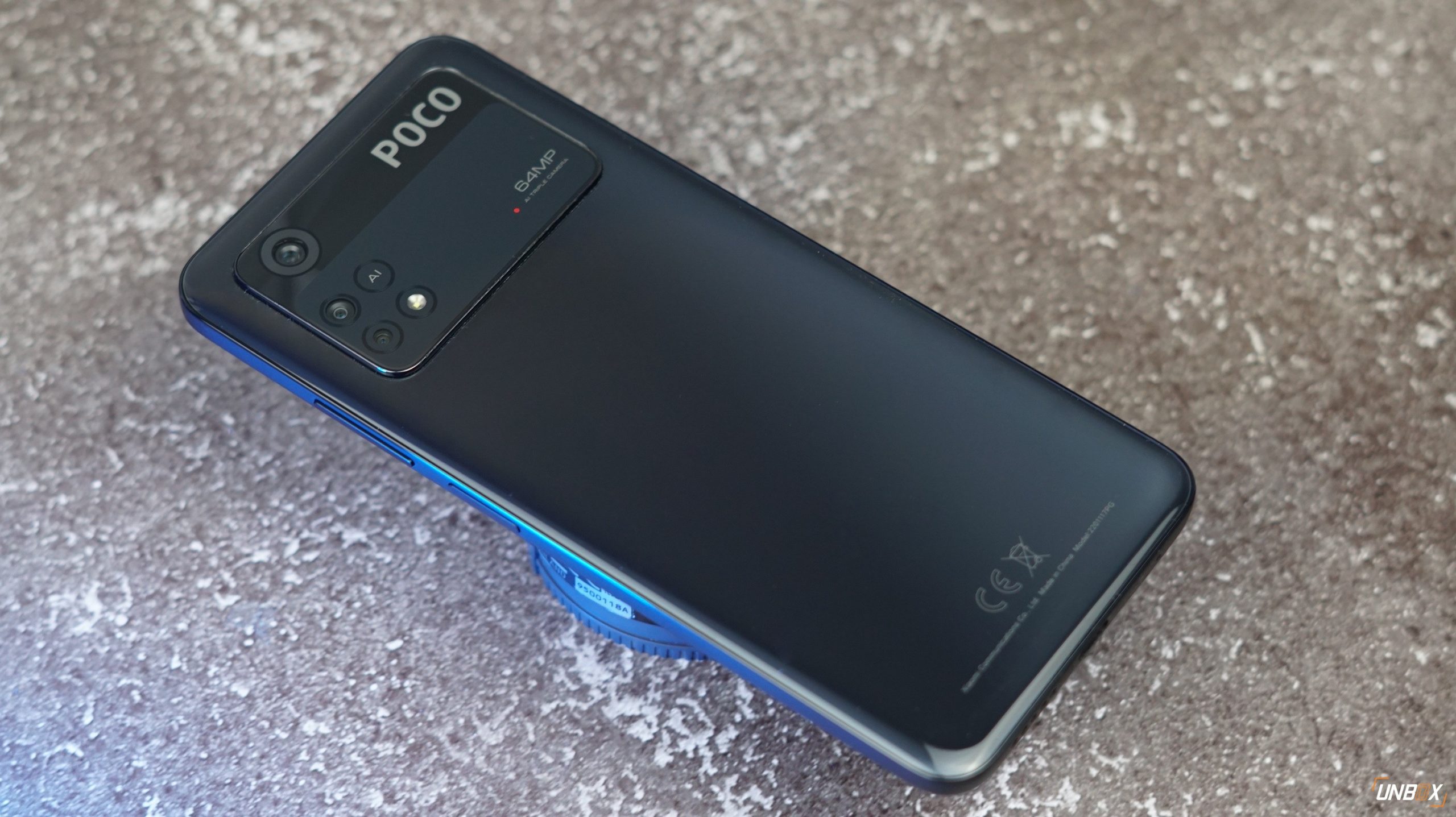
Wrap-up and conclusions
Our POCO M4 Pro review clearly shows that the removal of 5G from this particular phone isn’t as much as a downgrade for the Philippines as we initially thought. It has better cameras than the 5G variant, as well as a much better-looking screen.
If you’re looking for a phone that has solid photography capabilities that have a nice screen and don’t mind not having 5G, then the POCO M4 Pro is the phone for you.
POCO M4 Pro Review Philippines Price
The POCO M4 Pro has a price of Php 12,990 for the 6/128GB model in the Philippines while the 8/256GB variant will cost you Php 13,990.
If you’re interested, you can buy the phone on POCO’s official Shopee and Lazada pages.


